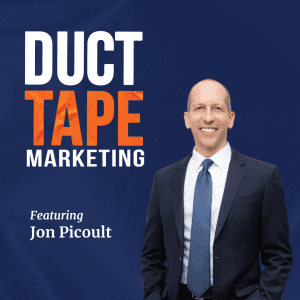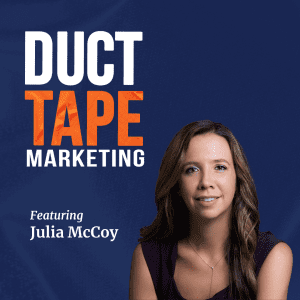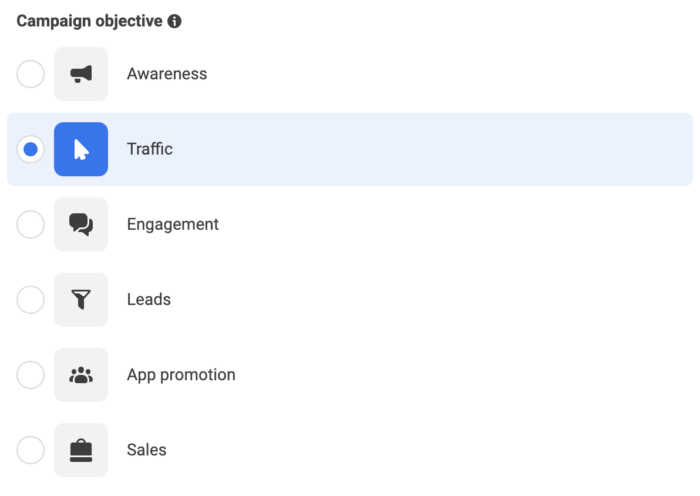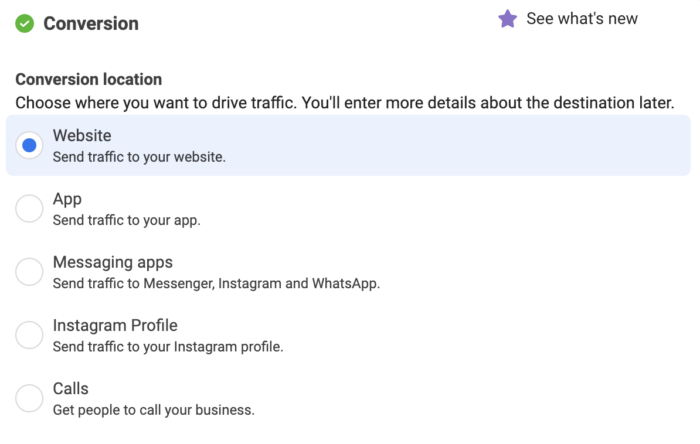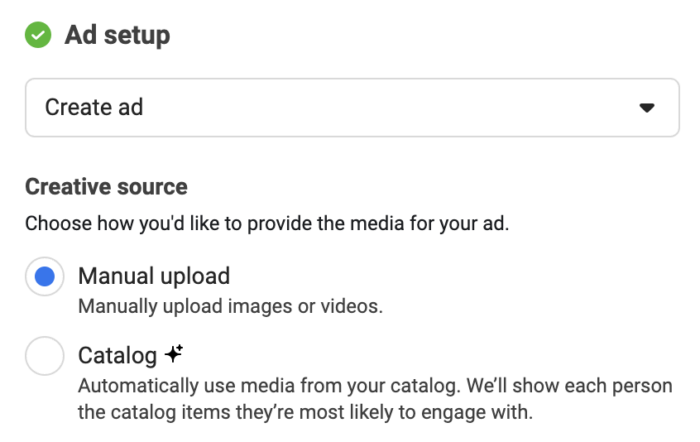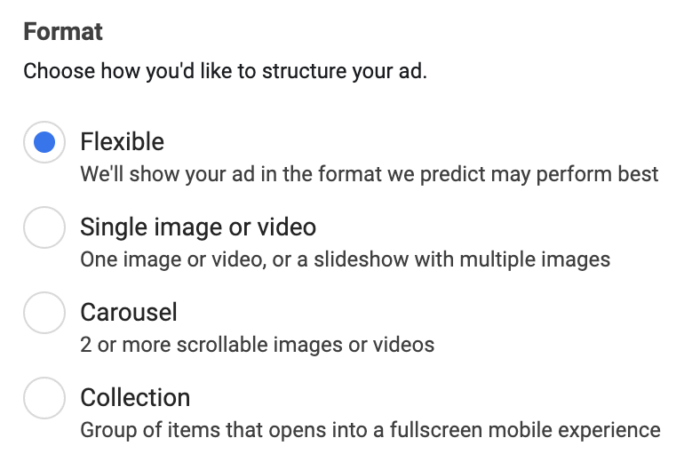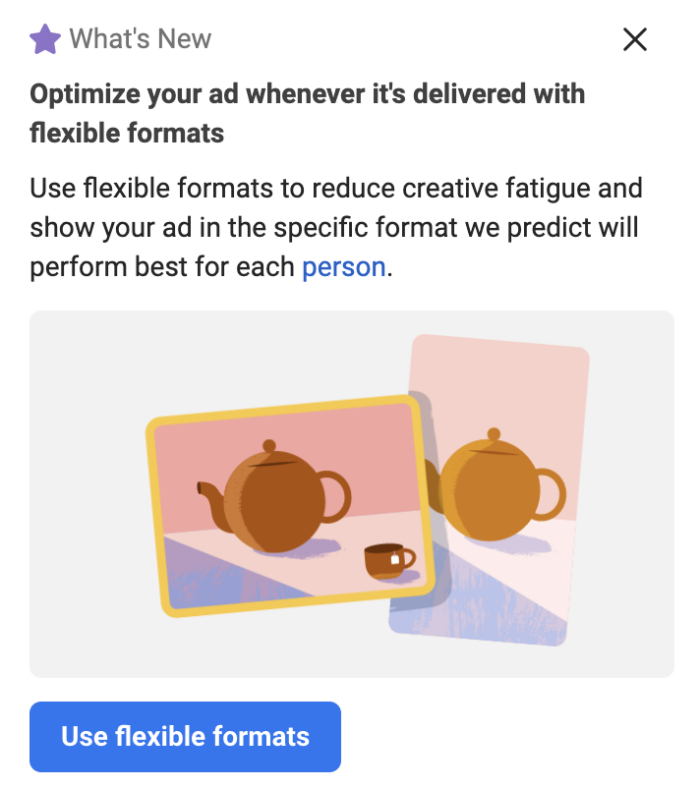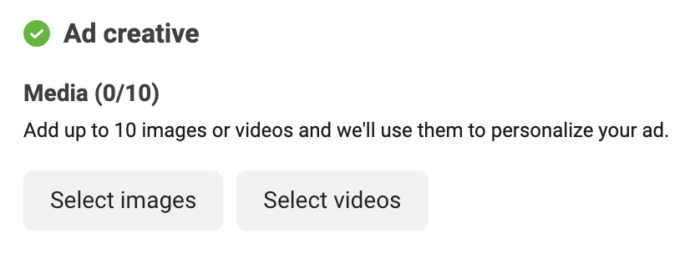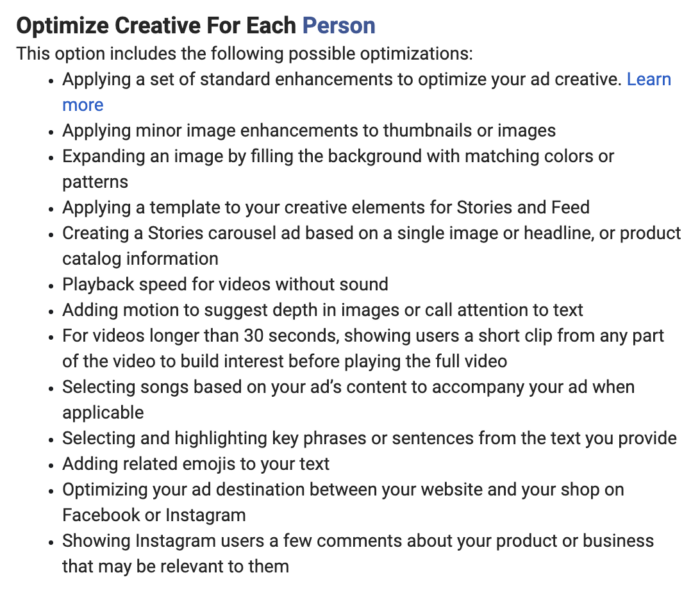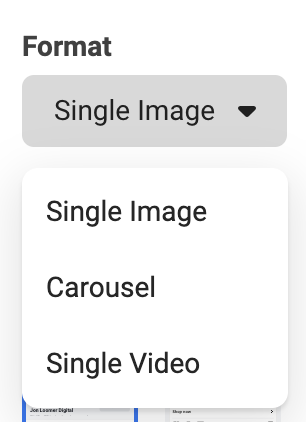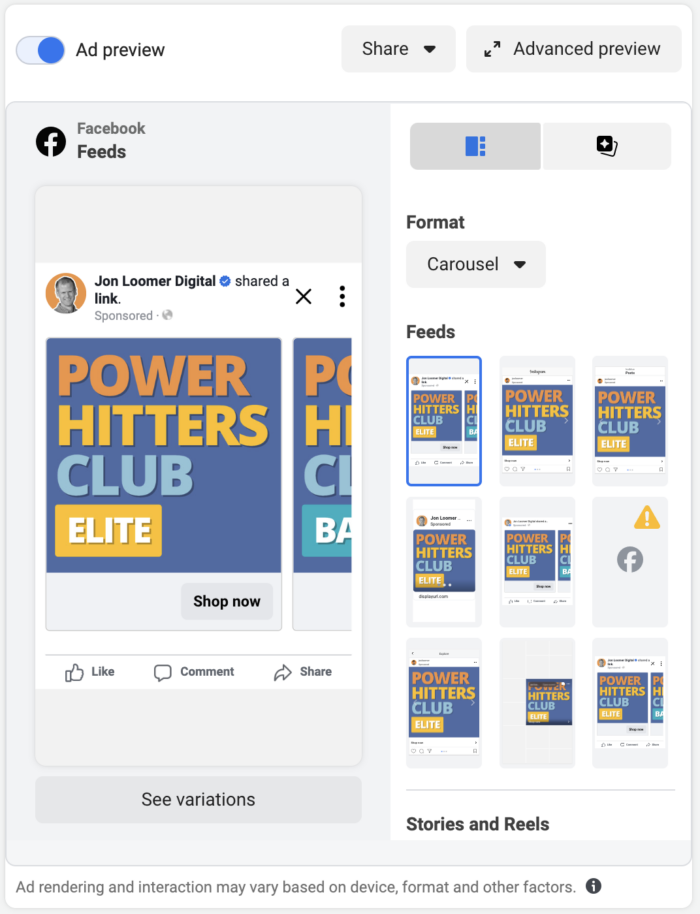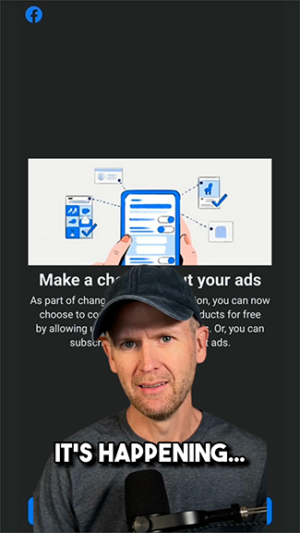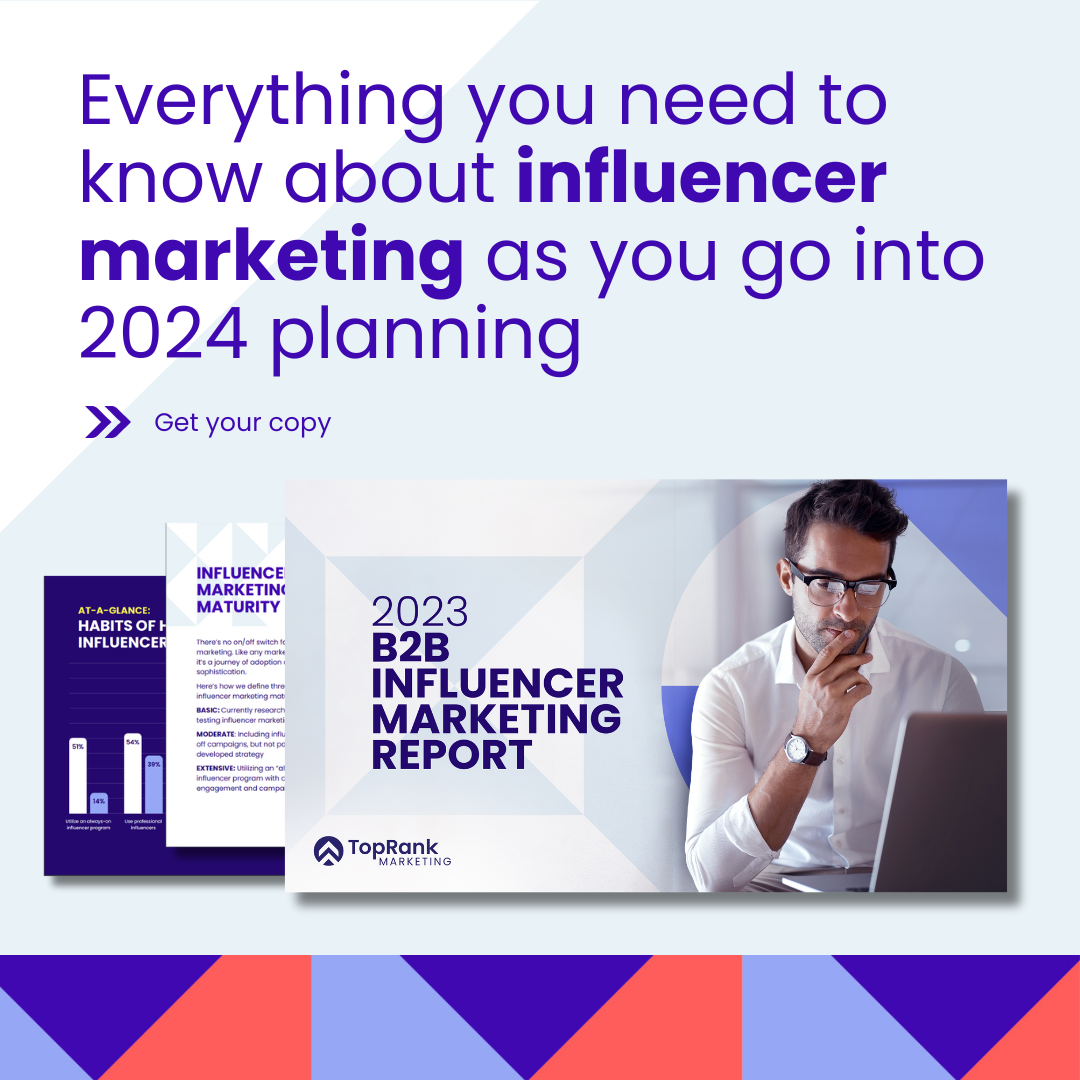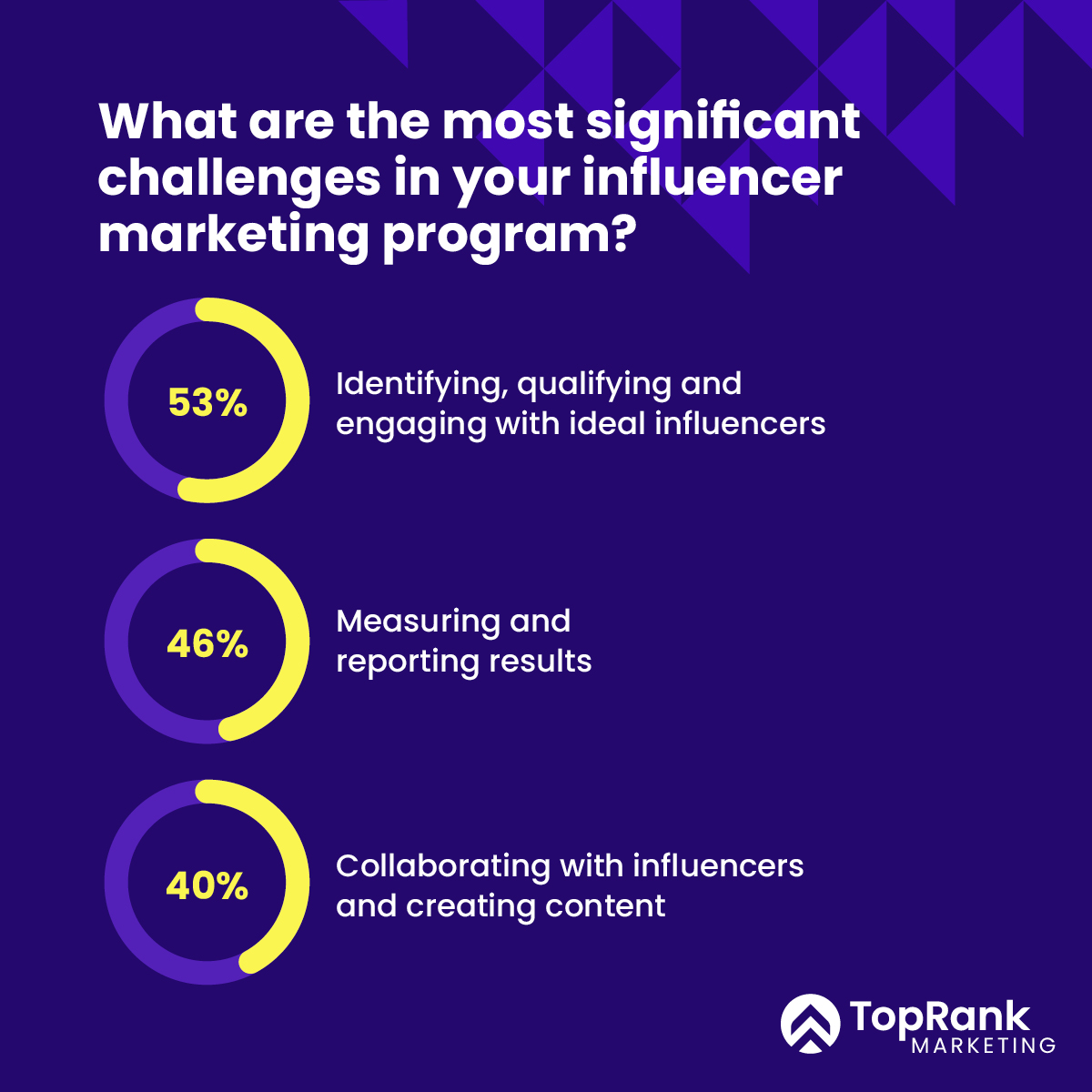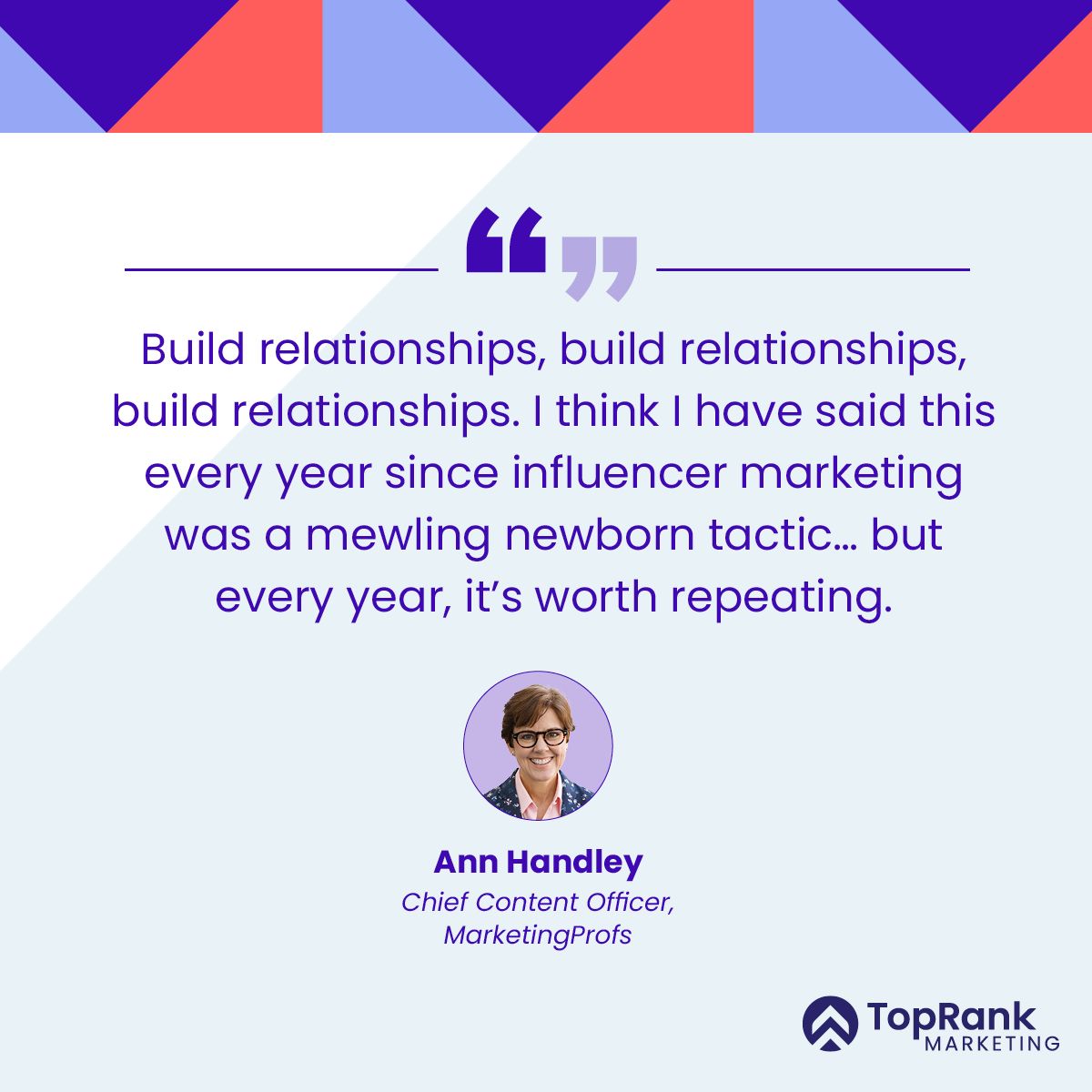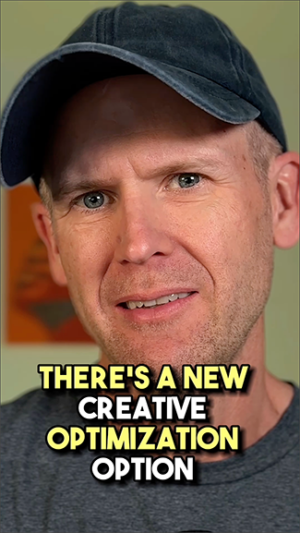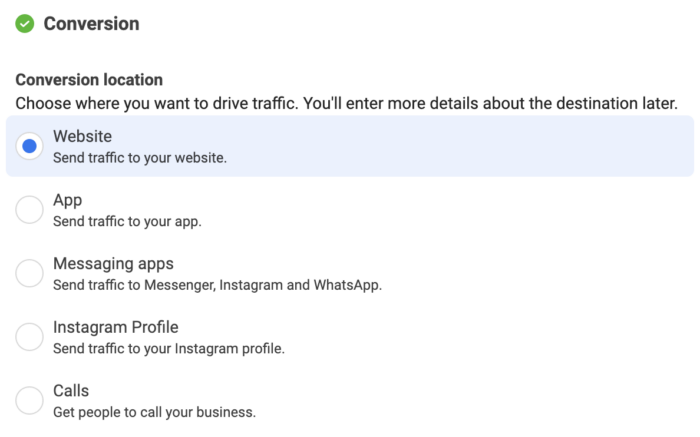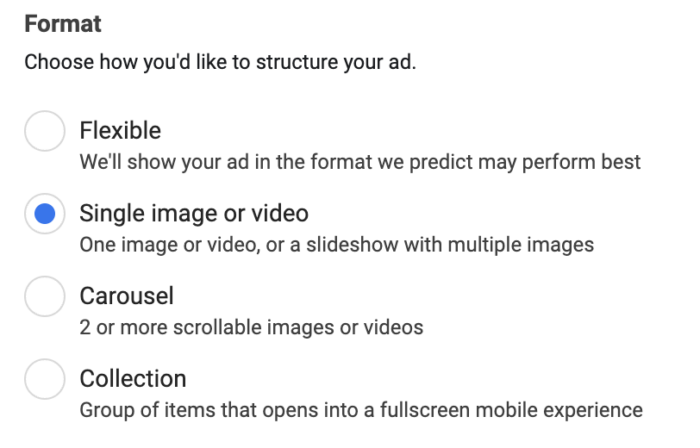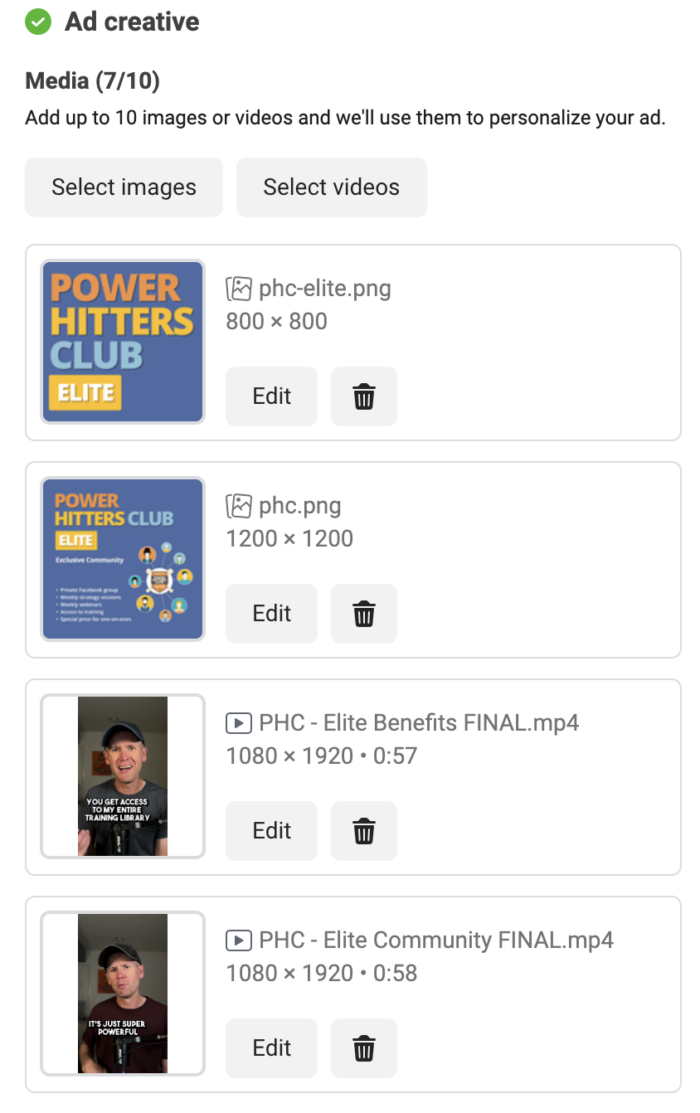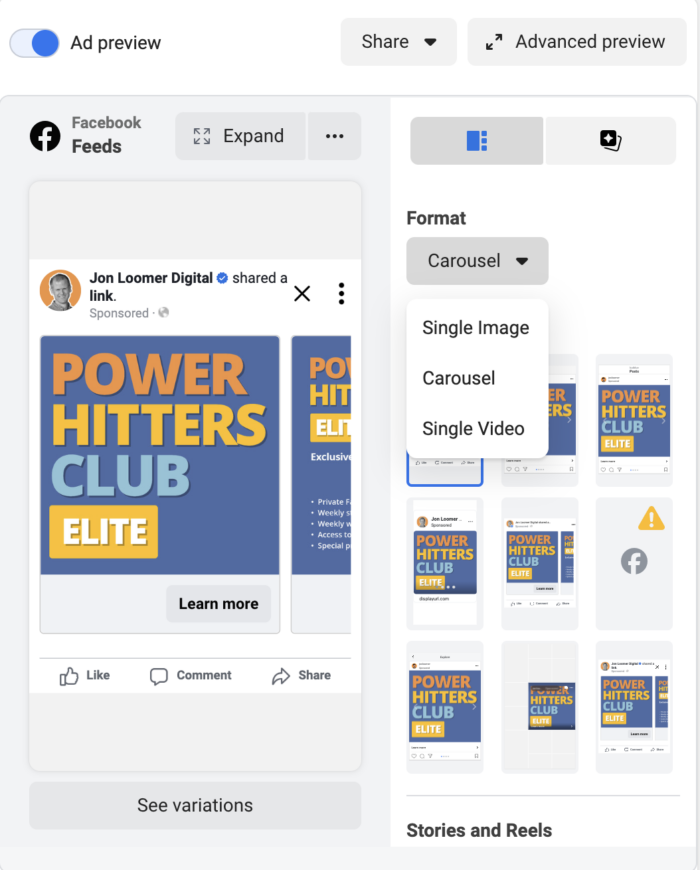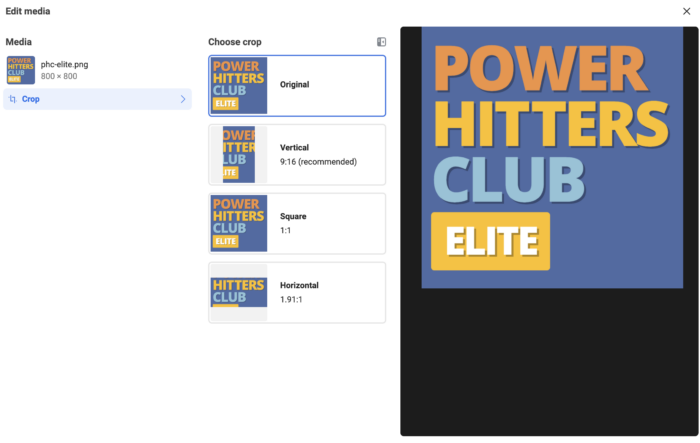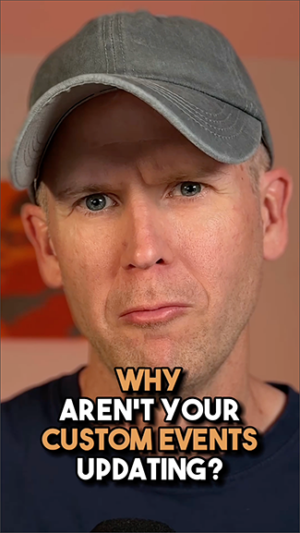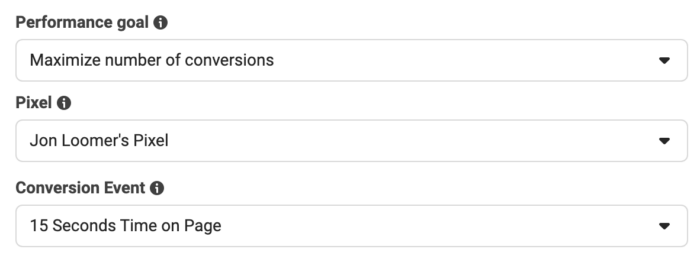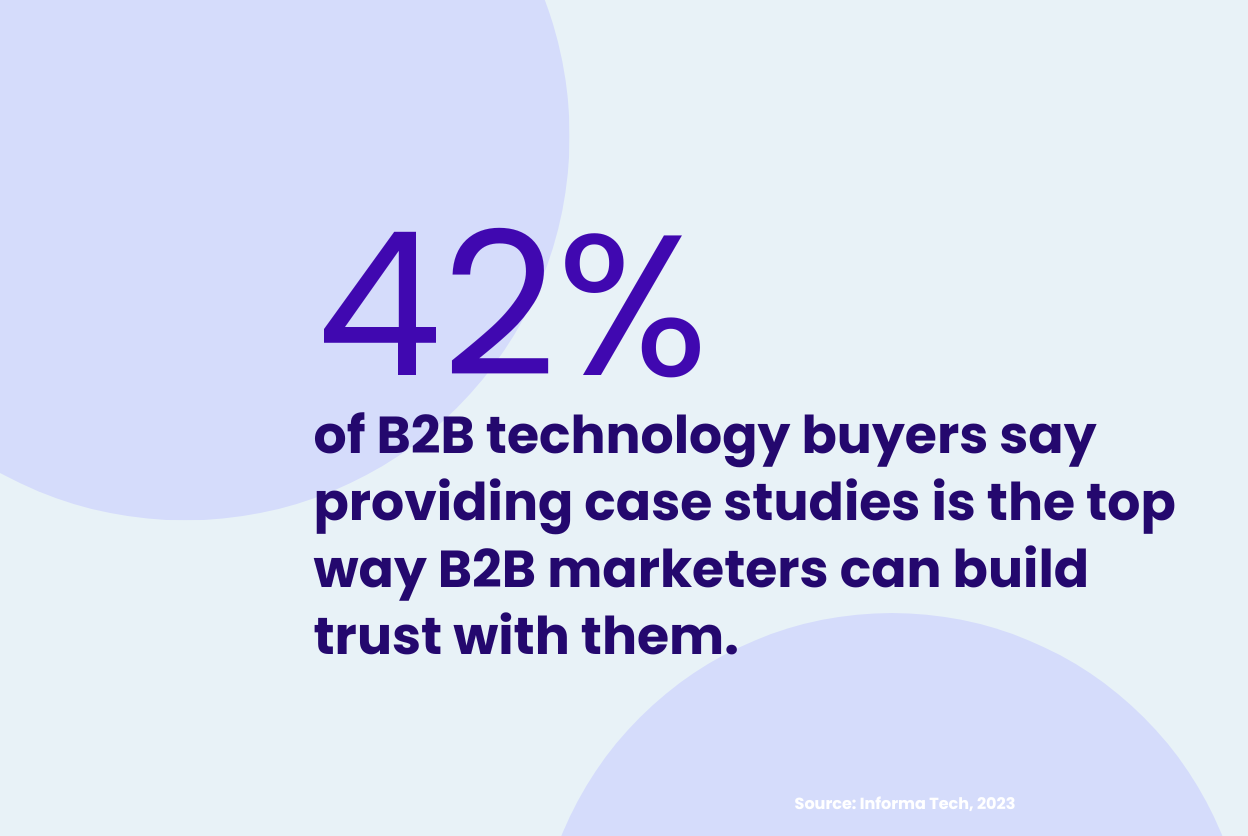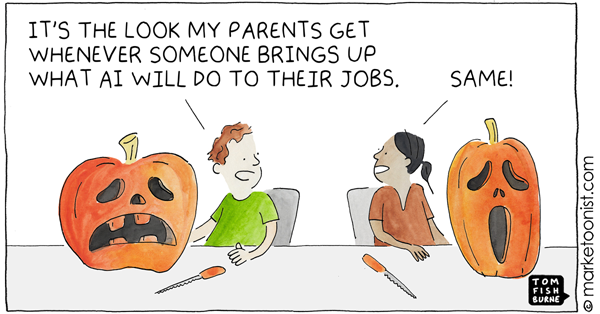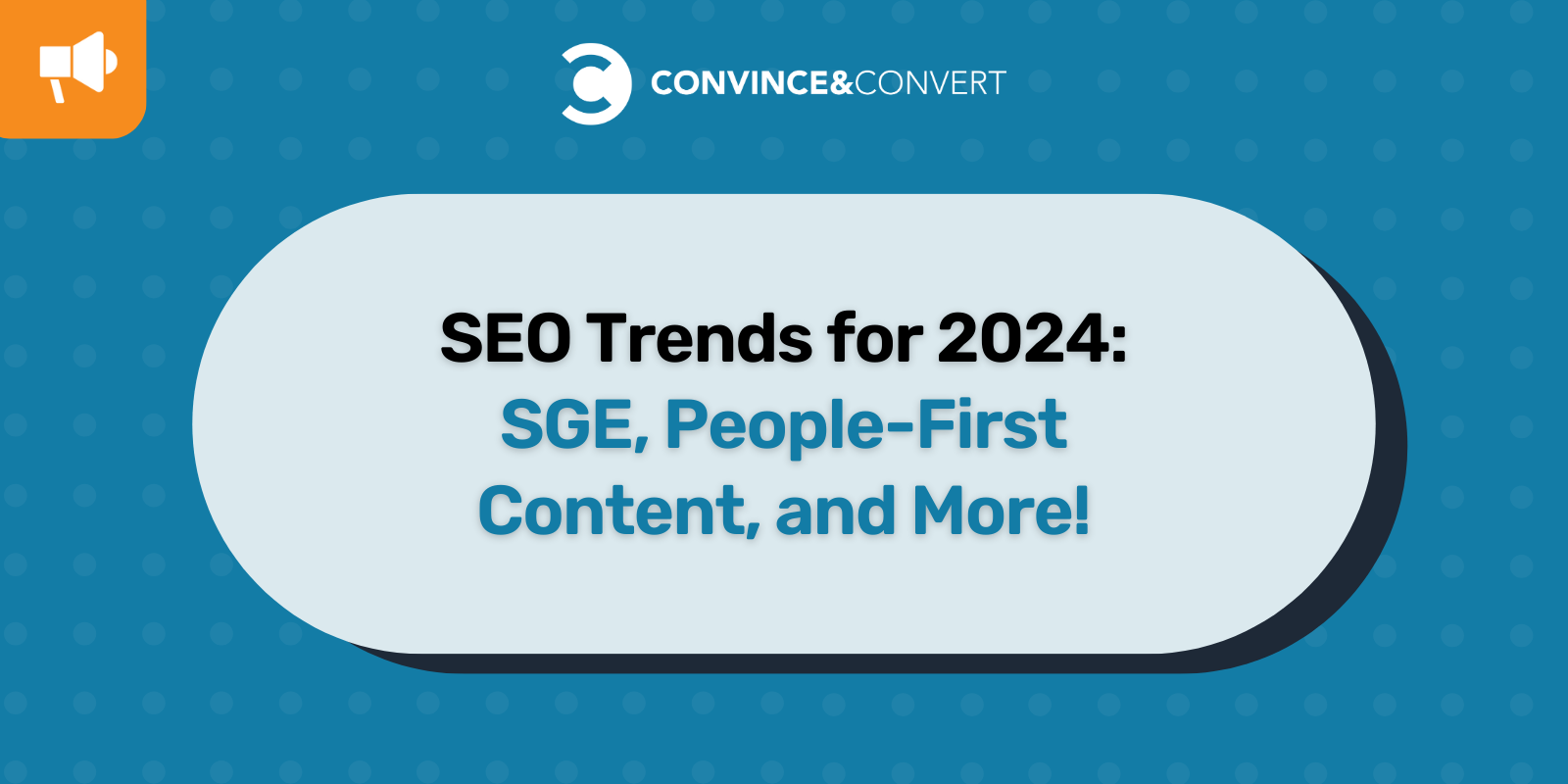
SEO is one of the youngest marketing disciplines out there, and it’s also incredibly fast-paced. It looks almost nothing like what it did when we started.
While the fundamental principle remains the same — SEO is about making websites easy to find and understand — the tactics involved are very different than they were 15, 5, and even 1 year ago.
Generative AI entering the marketing scenes at the end of 2023 made things change even faster for our industry.
So what are the most important SEO trends for 2024 and how can you implement them?
Here’s what you should know for 2024, as well as key steps for implementing these trends and tactics.
SEO Trend #1: Search Generative Experience
SGE (Search Generative Experience) is Google’s experiment to provide AI-generated answers in response to search queries.
Google announced its SGE experiment back in May 2023 and there’s little reason to doubt this is not something they are going to release to the public at any point during 2024.
Google doesn’t want to be left behind in the AI game, and the speed at which they fine-tune the layout of their AI answers is impressive. All of that makes it pretty clear that SGE is the future of search.
So when AI snapshots are released to the public, what’s going to happen to our organic visibility?
- We will get less traffic from search results because they will be pushed down the page
- Search journeys will become more dynamic and unpredictable: AI snapshots are generated from scratch and look differently for different users, so there will be no way to tell what each searcher saw before landing to your page.
How to prepare for SGE
AI snapshots have been changed many times by Google so far, and they will likely go through more changes, but currently, they do provide clickable links that present an opportunity for publishers to generate clicks.
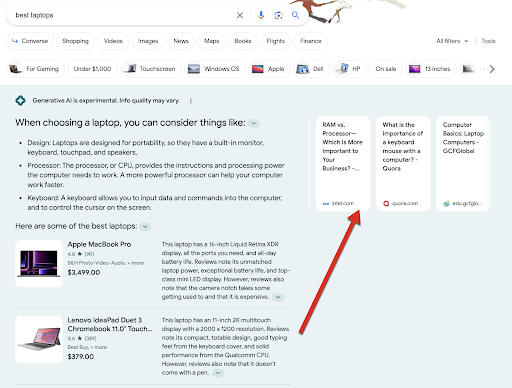
Michael King did an extensive study of how AI snapshots work and found a direct correlation between being cited in AI answers and organic rankings below:
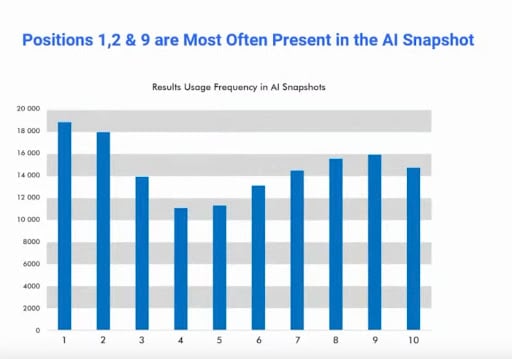
So organic rankings remain important as SGE uses what Google already has including Google’s index and knowledge graph. With this in mind, the fundamental optimization tactics are not changing here:
- Create relevant content solving all kinds of problems your target audience may have on their buying journeys
- Optimize product pages and categories based on users’ needs
- Structure the site to surface your pages based on the audience’s demands
- Get your pages linked (this is what drives discovery and Knowledge Graph among other things, especially if you focus on co-citation links which put your site next to known entities and gradually become one through those associations)
SEO Trend #2: People-First Content Strategies
Google rolled out its “Helpful content update” in September of this year prompting the whole SEO community to ask “What exactly is unhelpful content?”
There have been many vague definitions provided by Google and its representatives but the point is always the same,
Helpful content is the one created for people. Unhelpful content is one created for search engines.
And here comes the new era in SEO-driven content creation: Instead of trying to optimize for keywords, we need to optimize for journeys.
Google moved away from exact-matching keyword optimization years ago, yet our industry is somewhat slow to keep up. These days, Google doesn’t use the actual string of words that are being typed in the search box. Instead, it looks at the query context and analyzes the possible search intent to deliver results.
Google has become very good at understanding searcher intent, and old-school content creation methods that focus on a single keyword string don’t work.
We need to create content that solves problems. That’s what Google is after, and so are our potential customers.
How to Create People-First Content
Simply searching Google to get an idea of how it is interpreting a query is a great first step. Look for other ways Google is trying to solve the underlying problem for the user.
Some queries require 101 information (e.g. definitions, FAQs etc.), others need more specific content like clear steps or instructions that do one thing: Help with one particular problem (like a comparison table or a visualization). The goal of your research is not to copy everything higher-ranking competitors are doing. The goal is to find what Google found particularly useful for each specific query.
It also helps to use Wayback Machine to check what the page used to look like. Maybe it is something it added/removed that helped it trigger helpful content filters.
User experience has been proven to play a role here. Google wants content helpful and the website user-friendly, so that their searchers are satisfied. So evaluate your page’s UX (and pick up some UX tricks from competitors).
SEO Trend #3: E-E-A-T
E-E-A-T stands for “Experience, Expertise, Authoritativeness and Trustworthiness” of a website and content creator (yes, both, this is important).
The concept isn’t exactly new. I first covered it 8 years ago.
It has become a newly discussed trend because Google has been increasingly pushing the concept of using your unique experience and expertise when creating content this year. And for a good reason.
Generative AI poses another problem to the SEO industry: Generating unique content has become much easier. It takes a few minutes to use ChatGPT, and Google realizes that search results will soon be flooded by it.
The problem with AI-generated content is that it is not truly unique: AI tools use existing content to create new articles.
This is why Google has been trying to figure out ways they can continue highlighting original sources, unique expertise, and first-hand experience.
How to Use E-E-A-T to Drive Your Content Strategy
Setting up your brand and associated authors as topical authorities is going to be even more important going forward. There is no “faking” authorship anymore. You need to have a recognized voice Google knows about.
- Write for established niche publications
- Create original research and studies
- Become active on social media networks and build up your following and engagements
- Consolidate your multiple columns and social media profiles using tools like Linktree
- Apply to speak at niche conferences or events
- Host webinars
- Create a detailed and impressive “About us” page highlighting your collective company’s expertise (here are a few templates)
- Get included in the “Top experts” lists in your niche. This is also good for co-citation because it places you next to known experts/entities.
- Get interviewed
- Set up alternative content distribution channels to attract links and build authority. These could be an email newsletter, a video course, a solid syndication channel (e.g. Medium), an actively maintained Quora profile, etc.
SEO Trend #4: SERP Marketing and Content Diversification
For years now, Google has been taking steps to become a destination, not just a discovery platform. With knowledge graphs, quick answers, and interactive and visual results, Google is building an ultimate resource that can give comprehensive answers to any query.
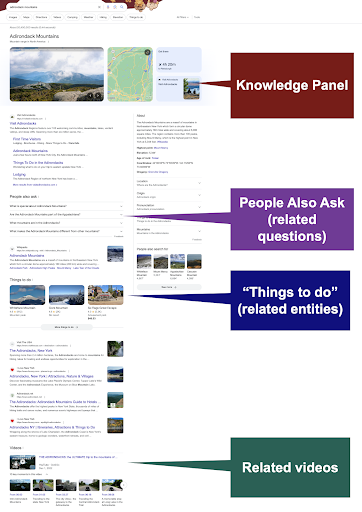
Within one search result page, we see:
- Google.com/Travel suggestions
- Knowledge graph (that includes maps, user reviews, basic facts, etc.)
- Related videos (This search element is interactive because you can scroll through the carousel to see more videos)
- “People Also Ask” results (This box is also interactive: You can click any question to read answers and expand follow-up questions. Interestingly, a question you click determines the topic of further questions that appear. I find this quite eye-opening.)
- The visual results include more similar destinations, related searches, and more
- Organic “text” results which are somehow lost in-between
This is where the concept of “SERP marketing” lies: You need to stop focusing on organic listings and start optimizing for all the other search elements, including videos, images, and “quick-answer” sections (“People Also Ask” and featured snippets).
You need to take each search result page as a whole to achieve brand visibility there.
How to Dominate Google with SERP Marketing
It has a lot to do with the “Optimizing for journeys” as you are looking at the whole concept and all related questions and content types searchers may be interested in. But it also adds a component of content diversification where you make sure to add more visuals, videos, etc. into the mix.
Set Up a Content Collaboration Strategy
Content diversification brings in both challenges and opportunities. On the one hand, you need to continually come up with quality content assets in various formats, which is incredibly hard to scale. On the other hand, you get to leverage more mediums and try more tools and tactics, which is pretty awesome.
Content collaboration is a tactic that can solve many issues and empower your marketing with more benefits, including natural backlinks, trust, and shares. And the good news is there are great projects that help you build contacts to co-create content and scale it.
Organize Your Strategy Using an Editorial Calendar
For content collaboration and co-marketing opportunities, consider using an editorial calendar solution that will help you organize your campaigns.
Creating a central dashboard for all your content plans to be visible to your whole team is key to a consistent and effective content strategy.
At the end of the day, content diversification lies at the foundation of omnichannel marketing that has multiple benefits (including cross-device compatibility, smoother shopping experience, creation of more marketing channels, and more). So you may want to start working on it whether you are worried about your search visibility or not.
Now, You Are Ready to Rock 2024
SEO is moving fast — it is a very exciting industry to be in. From the earlier days on, those people who were fast to “get it” found themselves ahead of slower-moving competitors. Use the tools and tips above to get ahead of yours in 2024 and beyond.
The post SEO Trends for 2024: SGE, People-First Content, and More! appeared first on Convince & Convert.

